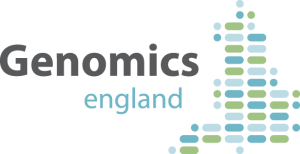Next in the ‘A-Z’ series is B, for ‘Biobank’ or ‘BioResource’. Biobanks and bioresources are frequently used to support an abundance of research looking into all kinds of different disorders and phenotypes. This blog outlines exactly what a biobank and a bioresource are, and how they are used to support research.
What is a Biobank?
Biobanks are rapidly becoming very popular in biomedical research in response to a global demand for high quality biological specimens. But what exactly is a biobank? A precise definition can be difficult as they can differ a lot in terms of size and purpose, so very broadly: biobanks are collections of biological samples, generally linked to clinical or other questionnaire data, which can be accessed and analysed for research or healthcare purposes. [1]
Often these biological samples are used for DNA analyses to understand how genetics can impact an individual’s health. Your DNA contains your genes, or your genetic code, which provide the instructions needed for development and reproduction. DNA by itself is not able to tell us very much. In order to make sense of this information and fully understand the role of genetics in healthcare, biobanks combine genetic data with psychological data and/or participants’ medical records, including information about previous illnesses and medications. This resource is then able to contribute new knowledge to our understanding of the causes, diagnoses, and treatment of disease. In the future, findings from studies using biobank data can hopefully help patients by providing a diagnosis where there was not one before, by leading to more personalised medicine, or by predicting response to different treatment options.
Examples of different biobanks
Biobanks vary a lot in size and purpose. [2] There are now a number of biobank research initiatives around the world, with national resources in a number of countries including Australia, Germany, Japan and Singapore. There are several within the UK as well, and we will highlight two of them here as an example of different types of biobanks.
Genomics England
Genomics England was set up in 2013 to deliver the 100,000 genomes project, the largest project of its kind worldwide. This project is sequencing 100,000 whole genomes from around 70,000 NHS patients (with cancers and other rare diseases) and their families.
UK Biobank
Unlike Genomics England, you don’t have to be a patient in order to take part in the UK Biobank. The UK Biobank follows the health and wellbeing of 500,000 volunteer participants who provided blood, urine, and saliva samples, as well as detailed clinical information about themselves. This is a prospective study, meaning participants have agreed to have their health followed over time, providing researchers with a rich resource of data to see why some people develop particular diseases and others do not. Prospective study designs are especially useful as people do not have to report on their past health from memory, which may not be as reliable.
What is a BioResource?
Though similar in many ways, a bioresource differs importantly from a biobank. Whilst a bioresource is also a collection of biological samples, it is crucially a resource for individuals who wish to continue to participate in future research. Having this re-contactable resource of individuals can provide scientists with access to a very large sample with both common and rare diseases, supporting a huge variety of medical research. The NIHR BioResource, for example, is a national research initiative involving both NHS patients and members of the general population who volunteer to be re-contacted for future studies based on their genetic, questionnaire, and/or clinical data. As well as providing a unique opportunity for collaborating scientists, the BioResource helps to create a community of volunteers who are interested in research and are regularly updated on the success of different projects. Why are these important?
Why are these important?
Biobanks and bioresources focus on translating clinical outcomes from genomic data. Advances in genomic medicine can shape the way NHS patients are diagnosed and treated, leading to more personalised medicine.
Research using genetic data requires extremely large sample sizes in order to find significant effects. In biobanks, samples given at one point in time or previously generated data (e.g. genetic data) can be re-analysed in different ways as part of many future research studies. This has huge potential to accelerate science, as time and funds do not have to be spent on collection and storage of samples, nor (in the case of bioresources) on recruitment and screening of participants.
The aim of the NIHR Maudsley BioResource, a branch of the NIHR BioResource based here at Kings College London, is to collect information from 50,000 volunteers by 2021. We hope that this huge library of information will improve our understanding of different psychiatric and neurological disorders. This would enable us to develop new and improved treatments more quickly in the future.
What contribution to research have biobanks made so far?
The large sample size of a biobank enables novel research methods and hypotheses to be addressed. For example, the first Genome Wide Association Study (GWAS) of mood instability was reported using data from the UK biobank, analysing data from over 53,525 cases and 60,443 controls. [3] Access to this large a resource enabled researchers to assess the genetic heritability of mood instability and its genetic correlation with important psychiatric disorders, including depression, for the first time. Researchers were able to assess the biology of mood regulation, which was not possible before they had access to such a large sample size.
However, the UK is not the only country to be pioneering mental health research using biobank data. For example, several large-scale projects have been set up in Japan since the 2000s, with samples collected from 200,000 patients. The latest focus of Biobank Japan, currently in its third phase, is to collect information from 100,000 patients suffering from 38 diseases, with dementia and depression newly added as target diseases. [4]
Who can get involved?
Some biobanks do have specific age or characteristic requirements; however, many are open to the general community. Anyone who is NHS registered can take part in the NIHR BioResource. That includes those receiving treatment, their family members, and the general community. In addition, there are several active sites across the UK. For example, the Cardiff University Biobank is looking for volunteers from the general community to donate samples to their brand new facility at University Hospital of Wales. For more information about volunteering to participate in our local BioResource Centre in the South London and Maudsley Trust, please follow this link: https://www.maudsleybrc.nihr.ac.uk/facilities/bioresource/.
Keep an eye out for biobanks or bioresources in your area!
References
- Chalmers, D., Nicol, D., Kaye, J., Bell, J., Campbell, A. V., Ho, C. W., … & Molnár-Gábor, F. (2016). Has the biobank bubble burst? Withstanding the challenges for sustainable biobanking in the digital era. BMC medical ethics, 17(1), 39.
- Meir, K., Cohen, Y., Mee, B., & Gaffney, E. (2014). Biobank networking for dissemination of data and resources: an overview. J. Biorepository Sci. Appl. Med, 2, 29-42.
- Ward, J., Strawbridge, R. J., Bailey, M. E., Graham, N., Ferguson, A., Lyall, D. M., … & Pell, J. P. (2017). Genome-wide analysis in UK Biobank identifies four loci associated with mood instability and genetic correlation with major depressive disorder, anxiety disorder and schizophrenia. Translational psychiatry, 7(11), 1264.
- Tailor-made Medical Treatment Program(BioBank Japan: BBJ) [Internet]. Available from: https://biobankjp.org/english/




